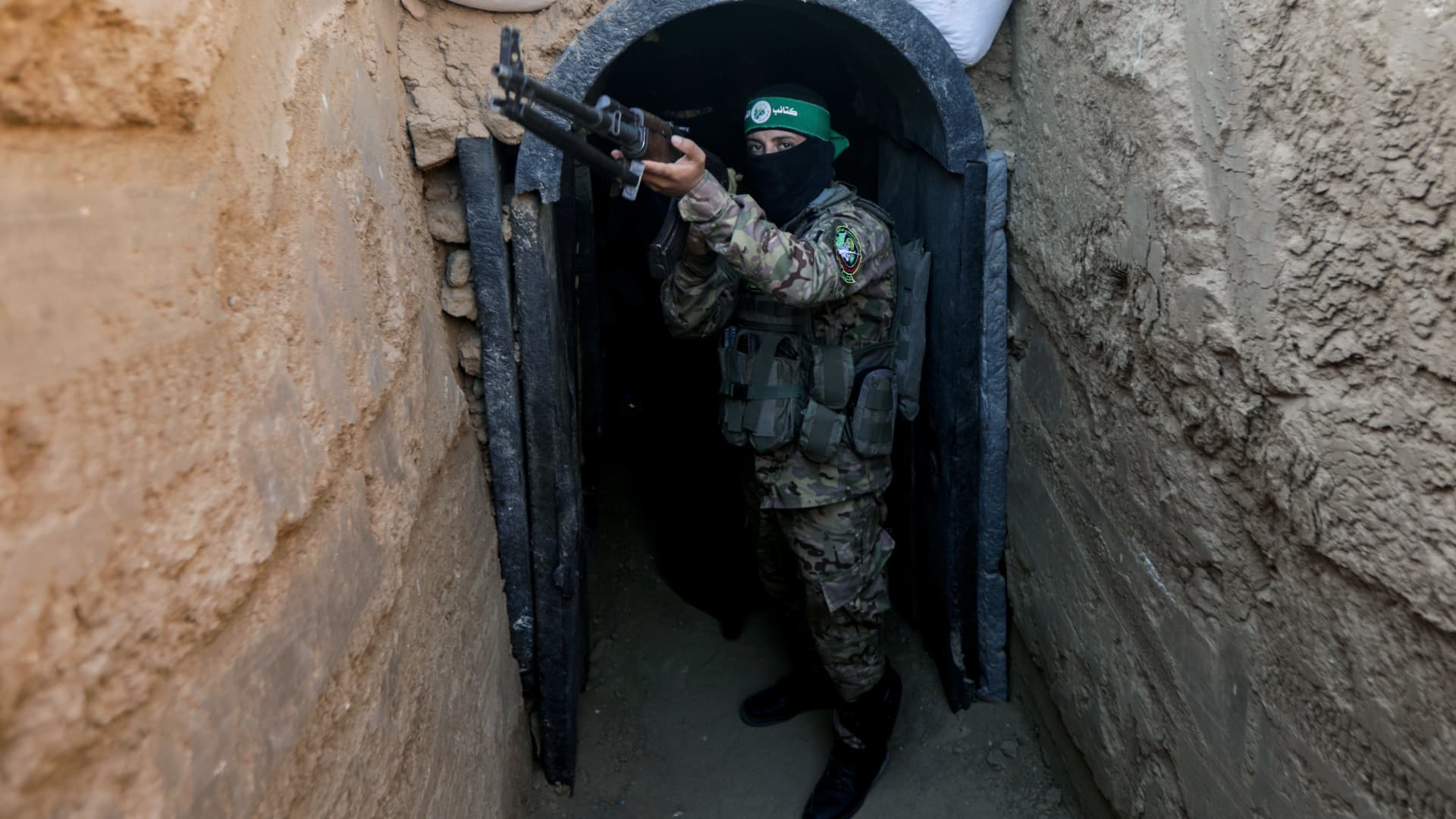A fighter from Izz al-Din al-Qassam stands in front of a tunnel during an exhibition of weapons, missiles and heavy equipment for the military wing of Hamas in the Maghazi camp in the central Gaza Strip, during the commemoration of the 2014 war that lasted 51 days between Gaza and Israel.
Sopa Images | Lightrocket | Getty Images
Israeli forces in the Gaza Strip are homing in on what may be the most challenging aspect of their ground operations in the war-torn enclave: the expansive network of underground tunnels built by Hamas.
The Palestinian militant group that governs Gaza has spent decades building what it says are more than 300 miles worth of tunnels in the blockaded territory, often more than 100 feet underground.
The Israel Defense Forces euphemistically nicknames this underground system the “Gaza metro.” The tunnels house weapons stocks, electrical generators, command and control centers undetectable from above — and likely many of the hostages that Hamas kidnapped from Israel on Oct. 7.
Follow our live coverage of the Israel-Hamas war
“Underground, long tunnels that connect to hospitals and schools are connected by them — they have communication rooms, ammunition warehouses, places to stay and everything in order to be used as a base of terrorism to harm the citizens of the State of Israel and the soldiers of the IDF,” Defense Minister Yoav Gallant said at a press briefing Tuesday, according to an NBC translation from Hebrew.
“We are gnawing away at this ability,” Gallant said. “And our forces from the north and south are approaching them and fighting inside the built-up area.”
The Israeli military says its operations are necessary to eliminate Hamas, after the group launched an unprecedented terror attack against Israel on Oct. 7, killing some 1,400 people and taking more than 240 hostage.
Israel’s response to the Hamas attack has been relentless airstrikes, a deepening ground incursion with tanks and other vehicles into northern Gaza, and a complete siege of the already blockaded territory, cutting off water, food and fuel to its 2.3 million residents. Health authorities in Gaza say Israel’s attacks have killed more than 10,300 people, roughly half of whom were children, and the U.N. and international aid agencies have warned of a mounting humanitarian catastrophe.
Meanwhile, IDF forces have surrounded Gaza City, which they say is a Hamas stronghold. They say they have previously uncovered tunnels under civilian sites including the al-Shifa hospital — which CNBC has not been able to independently confirm.
Used for both travel and shelter, the labyrinth of tunnels offers Hamas a strategic advantage to shield and ambush Israeli ground infantry, as well as move and store weapons and explosives.
“We know they’re waiting for us,” one Israeli soldier, who declined to be named due to his role in Israel’s security service, told CNBC. “And as bad as Gaza is above ground, underground is much worse.”
On Tuesday, Israel Defense Forces spokesperson Daniel Hagari released further images and video footage, allegedly depicting the location of tunnel shafts near a Ferris wheel and university, according to a Google translation. CNBC could not verify the pictures.
Israeli military spokespeople have signaled that the limited windows during which Israel stops shelling Gaza City to allow humanitarian evacuations will likely continue, as expectations mount that the next phase of Israel’s campaign will be a push to storm Gaza City and the underground spiderweb of Hamas tunnels woven beneath.
International pressure has ramped up on Israel to avoid harming civilians throughout its retaliatory strikes. Israel says it is only outright targeting Hamas operatives and positions, and stresses its evacuation warnings to civilians to move south, though its bombings continue in heavily populated areas of southern Gaza as well.
Despite Israel’s warnings, Gaza officials say that hundreds of thousands of residents are still stuck in Gaza City and northern Gaza, and that no aid has reached them for more than a month.
— CNBC’s Jason Gewirtz contributed to this report.

